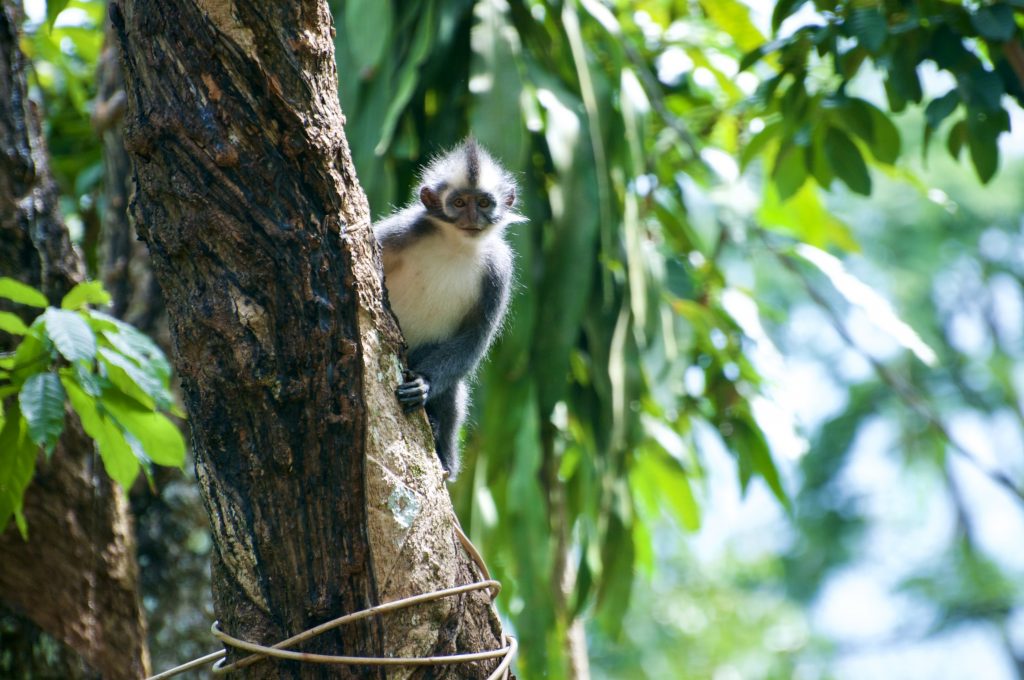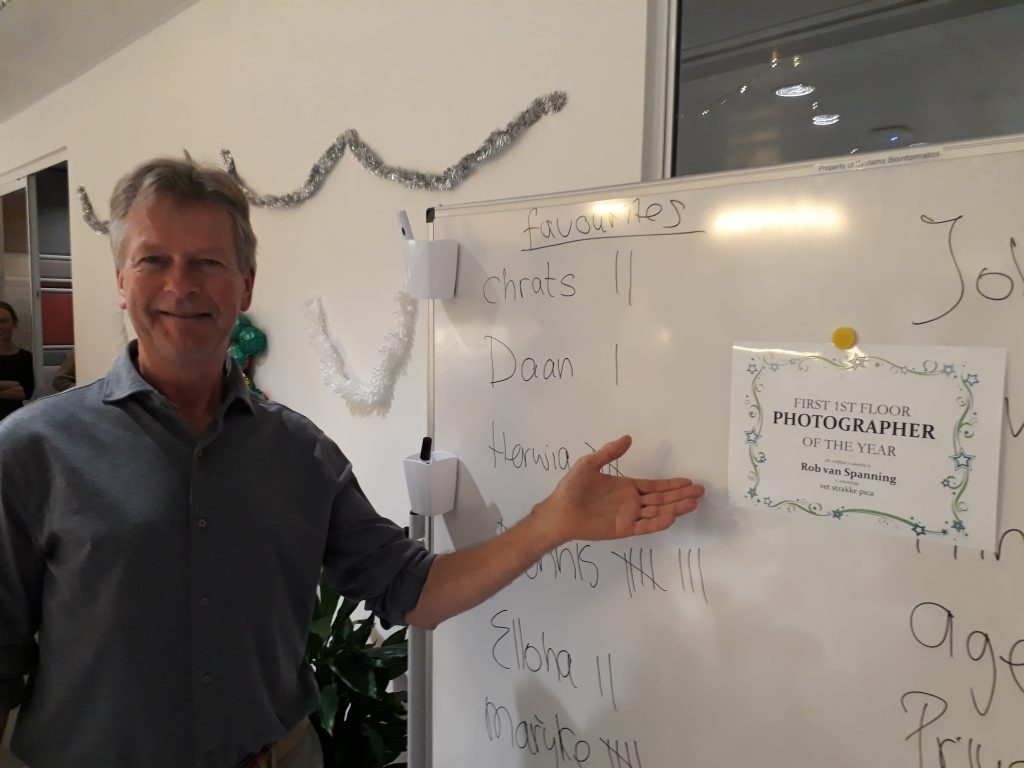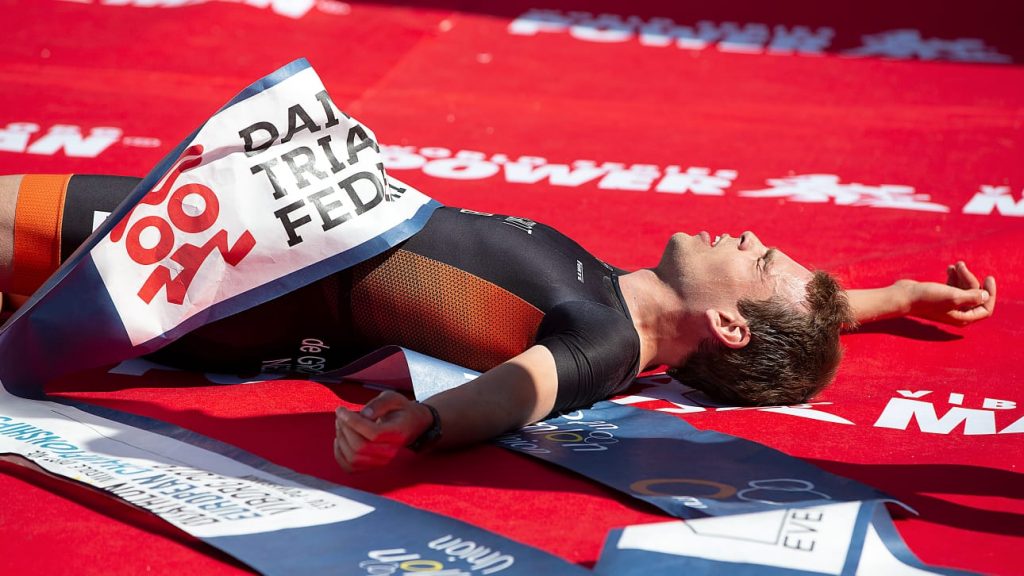
Herwig and Chrats gave a science talk in a bar


The winning photograph and his creator.


We recently published an article in which we reviewed the different approaches that describe a puzzling metabolic phenomenon called overflow metabolism: (https://doi.org/10.1007/s00018-019-03380-2).
Many different organisms secrete ‘overflow products’ in conditions where they grow and reproduce fast. For example, many yeasts produce ethanol, Escherichia coli produces acetate, and cancer cells produce lactate. This behaviour seems counter-intuitive because the production of overflow products is inefficient in terms of energy. The cells do not fully use the energy stored in their growth substrates at high growth rates, while they do fully use this energy at lower growth rates.
To study this phenomenon, many mathematical/computational models have been proposed, based on different biological fundaments and using different assumptions. However, since the models can all reproduce overflow metabolism, no final conclusion could be drawn about which model is closest to reality.
We therefore decided to analyse all constraint-based optimization approaches that describe overflow metabolism. Although these models appear very different: the approaches range from relatively simple flux balance analyses to self-fabricating metabolism and expression models, we could rewrite all of them in one standard form. We then looked for a common feature, for this could unveil the cause of overflow metabolism, and for differences, for these can be used to design experiments that test the different models and their assumptions.
We found that all models predict overflow metabolism when two growth-limiting constraints are hit, while the specific nature of the constraints differed between the models. This is in line with recent theory: (https://doi.org/10.1371/journal.pcbi.1006858). We concluded that finding the true cause of overflow metabolism in a specific organism thus amounts to proving which two constraints limit the growth of that organism. However, we did not find such decisive proofs for any constraint. Therefore, we decided to list all the proposed constraints, such that these can hopefully all be tested by specific perturbation experiments in the future.
The System Bioinformatics section has a new name and from now on will be known as:
A genome-scale metabolic reconstruction is a network of all biochemical reactions that can occur in a cell. These reconstructions have proven to be very useful because they can be used to make phenotypic predictions. Many computational tools to create these reconstructions have been created (or updated) recently, making these genome-scale reconstructions available for everyone. However, a potential user might not know about the best uses of each tool.
We therefore compared these different tools and published our results in Genome Biology. With the help of Brett G. Olivier, Douwe Molenaar and Bas Teusink, seven reconstruction tools were compared with regard to ease of use, compliance with standards and output network quality. For all the tools, some features such as specialist support were evaluated with a high score, while others such as automatic integration of experimental data for automatic network refinement were evaluated with a low score. In most of the cases, strengths in some tools are weaknesses in others. Overall, we show that none of the tools outperforms the other in all the studied features so users should carefully choose one tool or another (or combination of them) depending on the intended use of the model
In particular, the use of the high-quality manually-curated genome-scale models of Lactobacillus plantarum, Bordetella pertussis and Pseudomonas putida as a gold standard, allowed us to evaluate output networks generated with different tools. The research showed that some tools such as AuReMe, MetaDraft of CarveMe generated draft networks which are more similar, in terms of reactions, to manually-curated models than the ones generated with other tools. Other tools such as Pathway tools and Merlin provide a platform with several functionalities for manual curation so it may be adequate for projects where a lot of time can be dedicated to the refinement of the network. ModelSEED (and also CarveME) generates in a few minutes networks which are ready to perform FBA so it may be suitable for large scale screenings. Finally, RAVEN allows integration of multiple databases which may be useful for less characterized species. In any case, the choice will depend on the particularities of the project, so users are invited to check our article to find the perfect fit for their research.
Systeembioinformaticus Daan de Groot met Self-organising adaptation: a universal mechanism for microbial protein expression regulation
Cellen kunnen zich aanpassen aan, en groeien in, een verbluffende hoeveelheid omgevingen. Dit lijkt, gezien de eenvoud van individuele cellen, een onmogelijke prestatie. Maar hoe zit dit als een populatie cellen gaat samenwerken? De onderzoekers stellen een universeel mechanisme voor dat een populatie cellen in staat stelt te overleven, maar waar individuele cellen zouden falen.
Vijf VU-projecten ontvangen uit het NWA-programma (Nationale Wetenschapsagenda) Ideeëngenerator ieder een financiering van 50.000 euro voor de looptijd van één jaar om hun idee verder te onderzoeken.
JBAH-Vol.9 No.10 2019.pdf
Journal of Biology, Agriculture and Healthcare www.iiste.org
Vol.9, No.10, 2019
From Functional Potential of Soil Bacterial Communities Towards Petroleum Hydrocarbons Bioremediation
Abstract
Molecular ecology researches are rapidly advancing the knowledge of microorganisms associated with petroleum hydrocarbon degradation, one of the major large-scale pollutants in terrestrial ecosystems. The design and monitoring of bioremediation techniques for hydrocarbons rely on a thorough understanding of the diversity of enzymes involved in the processes of hydrocarbon degradation and the microbes that harbor their allocated genes. This review describes the impact of hydrocarbon pollution on soil microbial communities, the state of the art of detecting functional genes, and functional groups. We will focus on i) the structure, function and succession behavior of microbial communities exposed to hydrocarbons, ii) key genes and pathways, iii) future prospect into bioremediation of petroleum hydrocarbons in aerobic environments. The aim is to get a fundamental insight in these issues to ultimately improve petroleum hydrocarbons bioremediation.
We were represented well at the first edition of the multidisciplinary congress for life scientists: NWO Life 2019.
Coco presented the three different methods that she developed to measure bacterial responses to antibiotics. Checkerboards, fermentors and droplets: Coco uses all of them to distinguish who invades, who resides, and who persists. Given that similar bacteria can invade, reside or persist in our own bodies, there is little need to explain the relevance of this work.
Rinke also uses droplets, but for a different question: can cells communicate? And if so, can they send specific messages to close-by cells, or are their messages open for everyone? She showed that cells can only communicate privately if they live really close together (literally glued to one another). Although this seems abstract at first, it has important consequences for the evolution of symbiotic species: several bacteria that work together to grow faster (which is for example important in yoghurt production). Rinke expects that partnerships can only arise if cheaters are excluded. Conclusion: the partners should have evolved really close together. We all hope that future experiments will tell if this prediction is correct.
Besides our own delegation, there were many enthusiastic speakers. Most impressive were probably the keynote speakers: Iain Couzin and Ottoline Leyser. They talked with so much conviction that it didn’t matter that their research fields were quite far away from microbiology.


Although the weather still gives the idea that summer didn’t end yet, we had end-of-summer drinks last week. It was a nice get-together and many people joined for a drink and a chat.. The drinks were accompanied by a photo competition with 21 entries. During the drinks the photos were hanging on the wall for the participants to judge which photo stood out most and should win a prize. Ten pictures got at least one vote, but there was a clear winner: Julia’s picture of a duck in Leiden got 7 votes and made her the winner of our competition. She won a 500-piece puzzle of an image of of O|2. Congratulations!
After the voting, lively discussions arose on who had sent in which picture. As the pictures were a clear added value to the first-floor balcony, they were still there by the end of the week – and remained a talking point.
Recent Comments